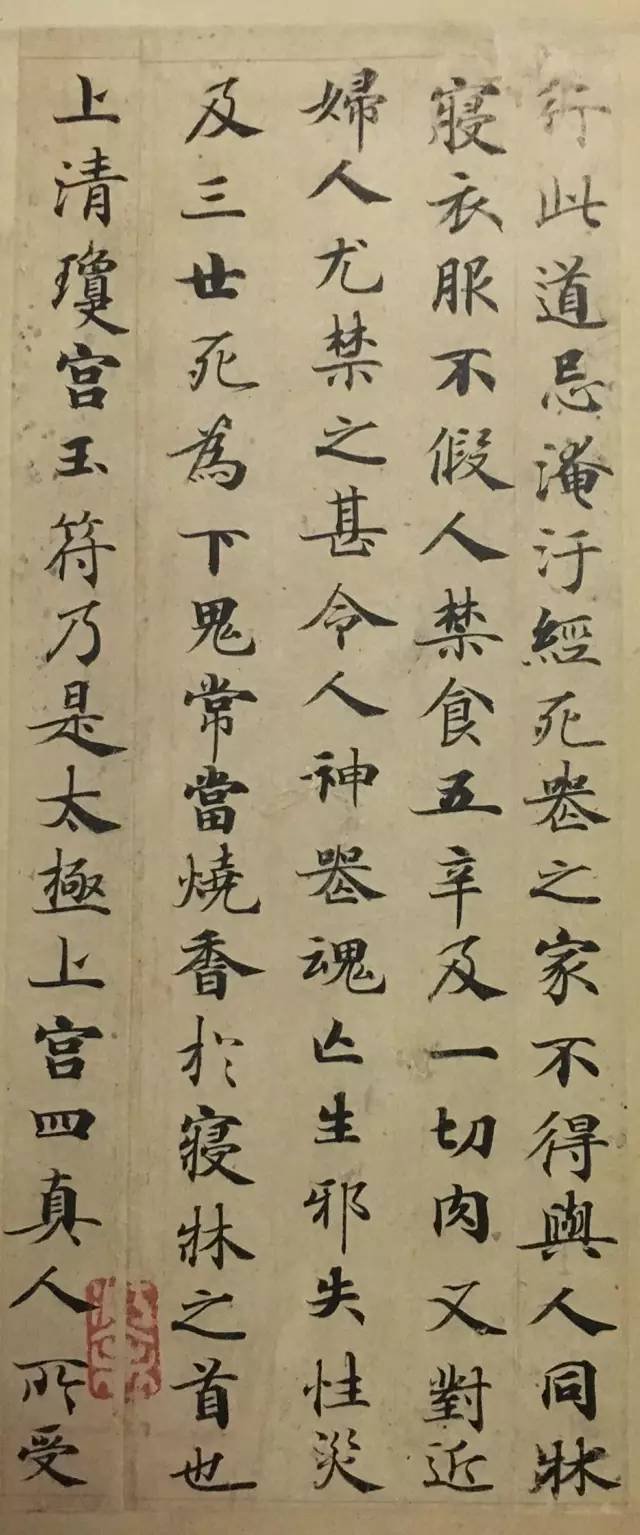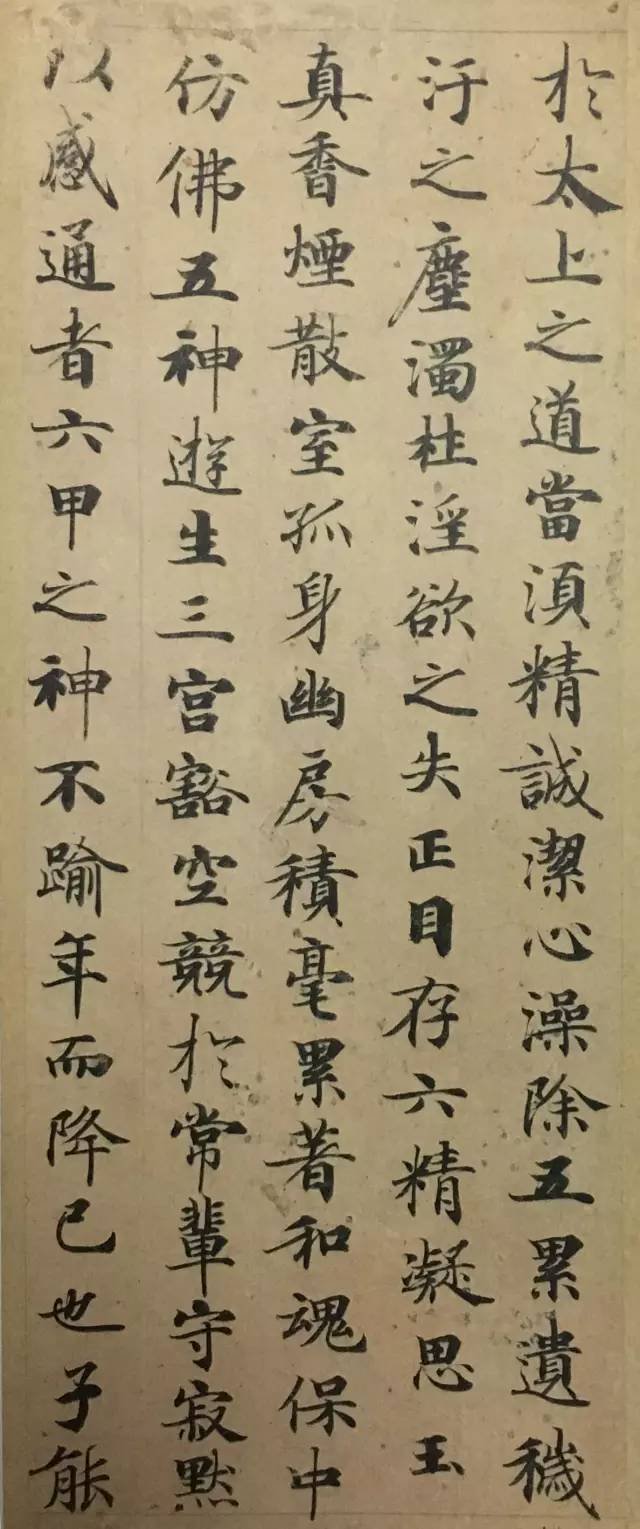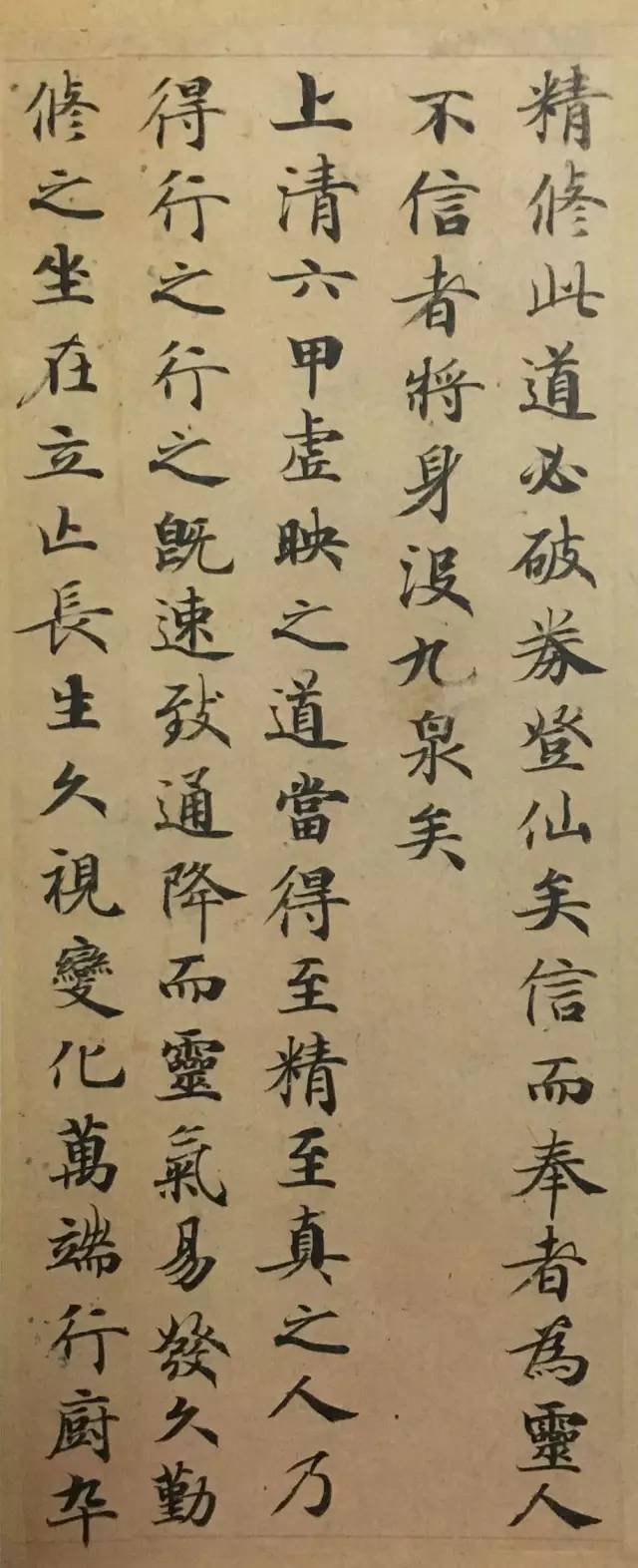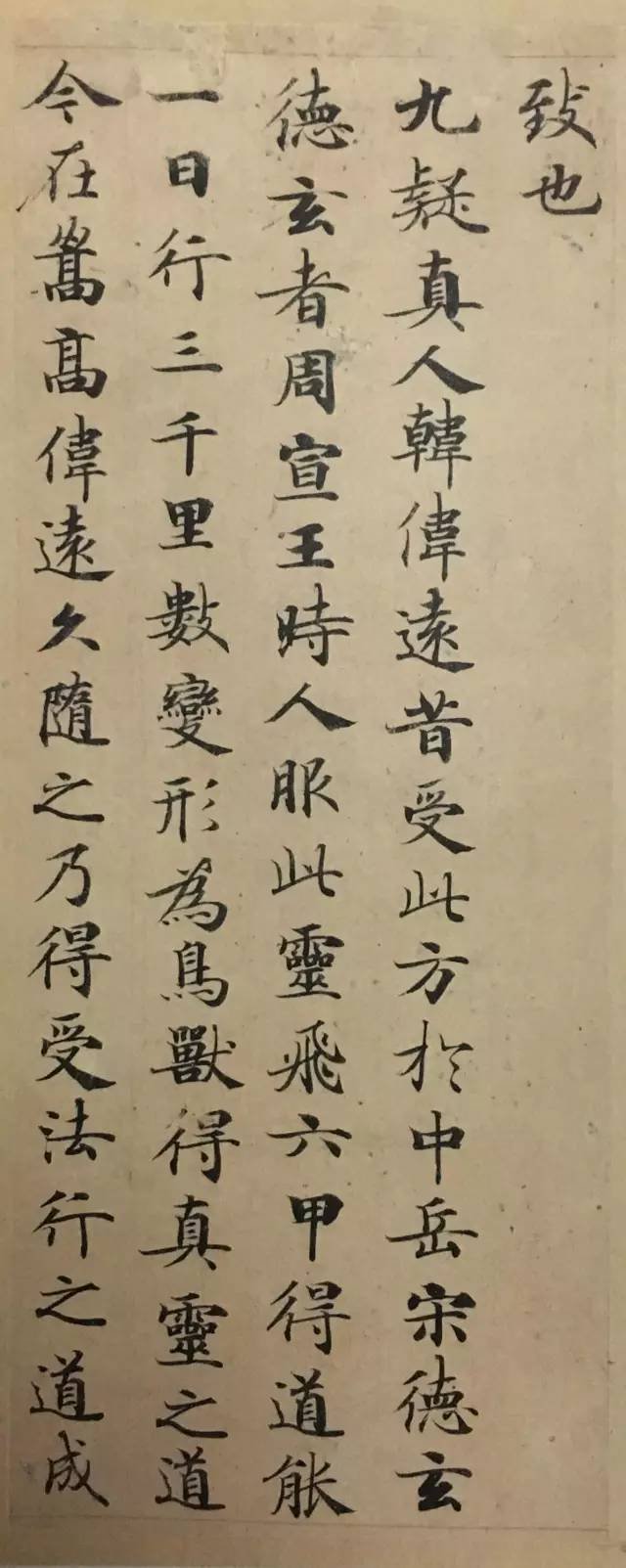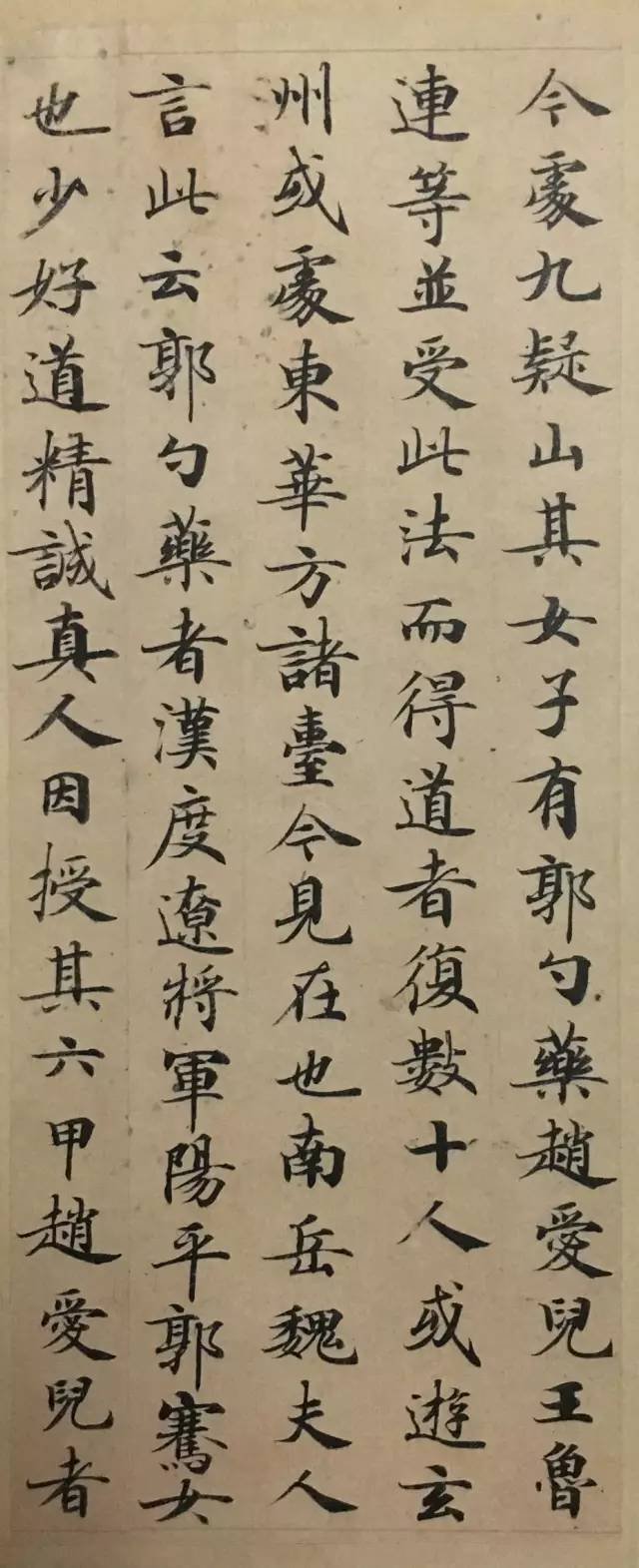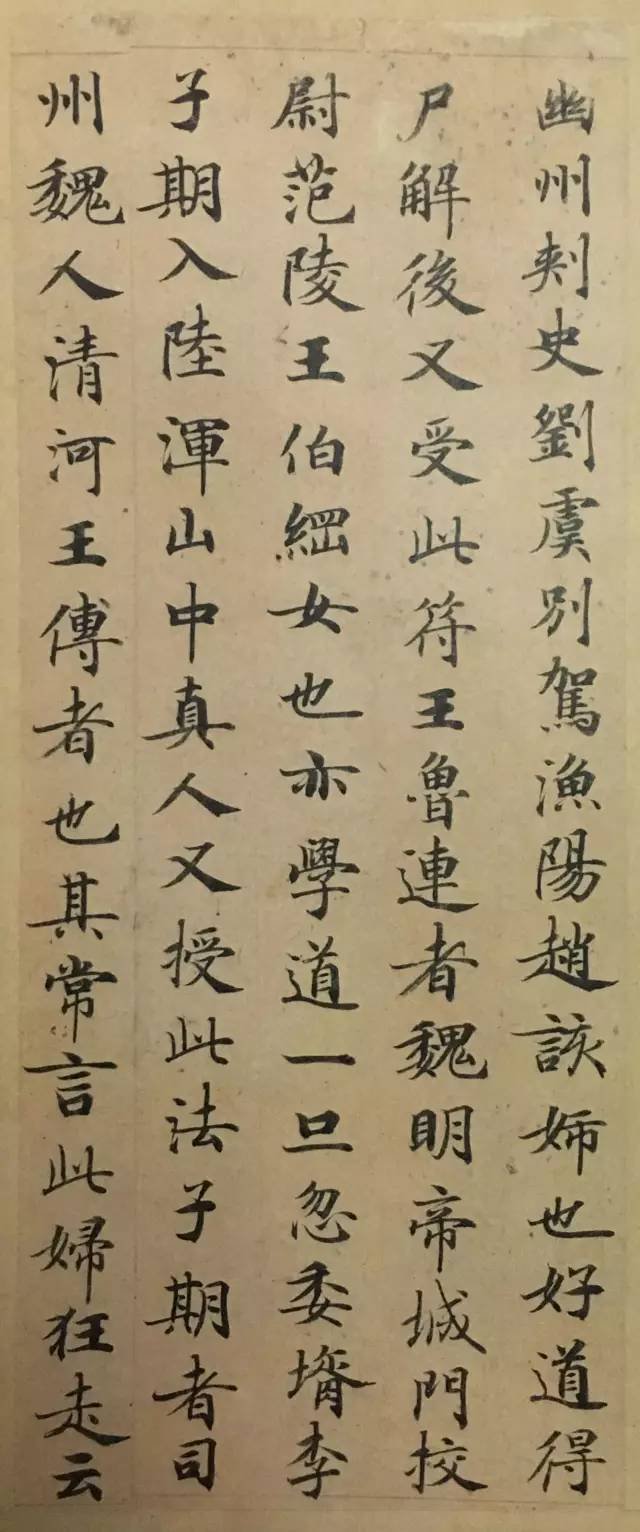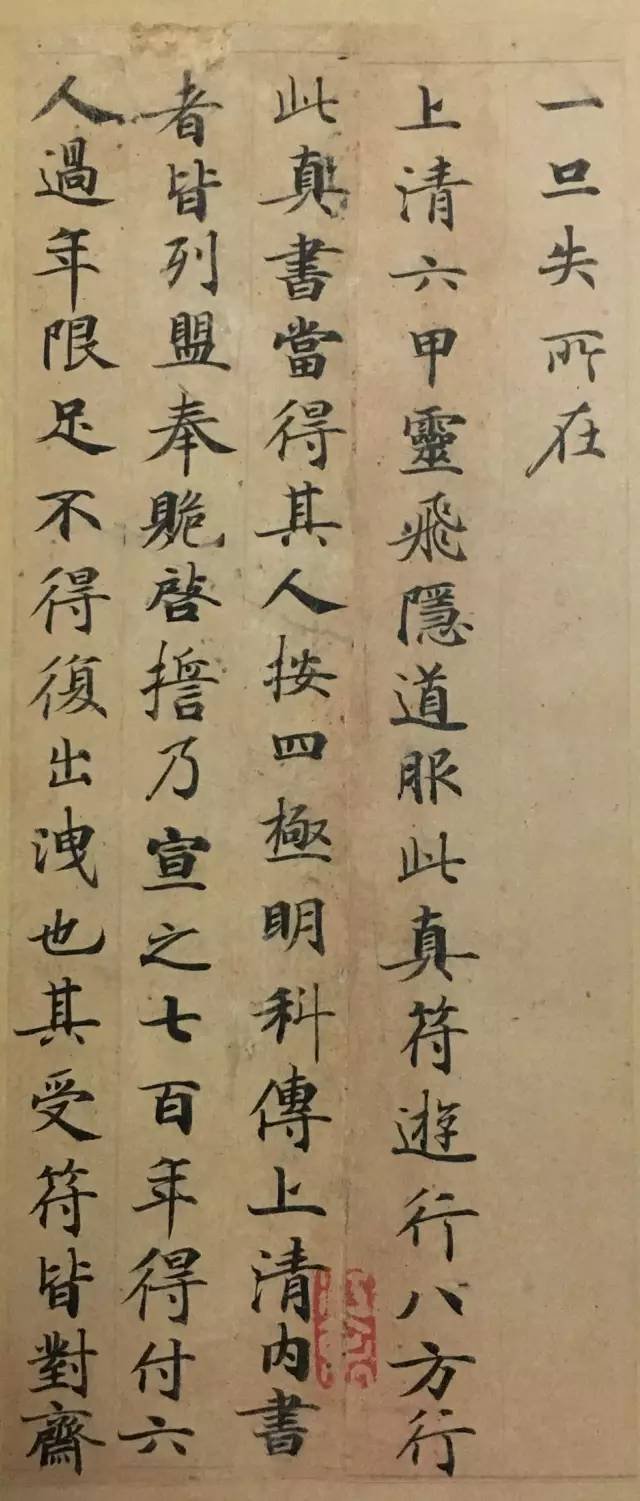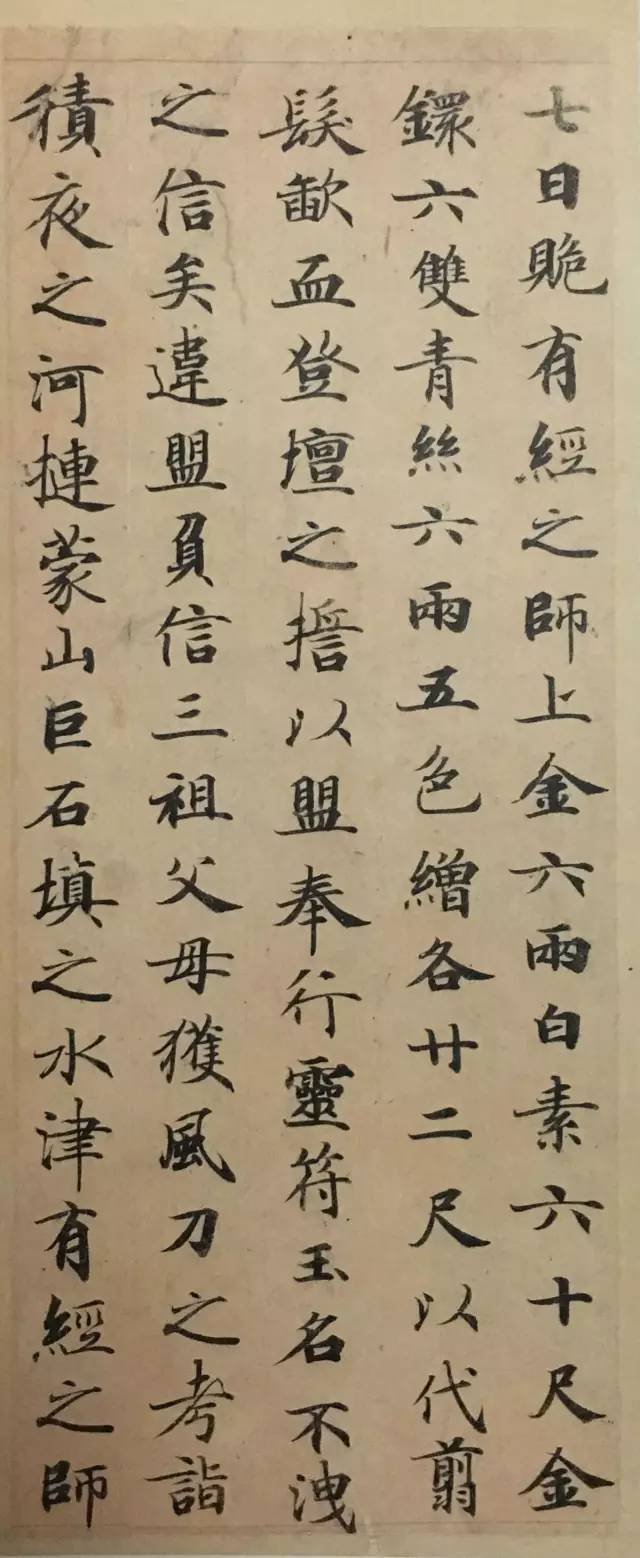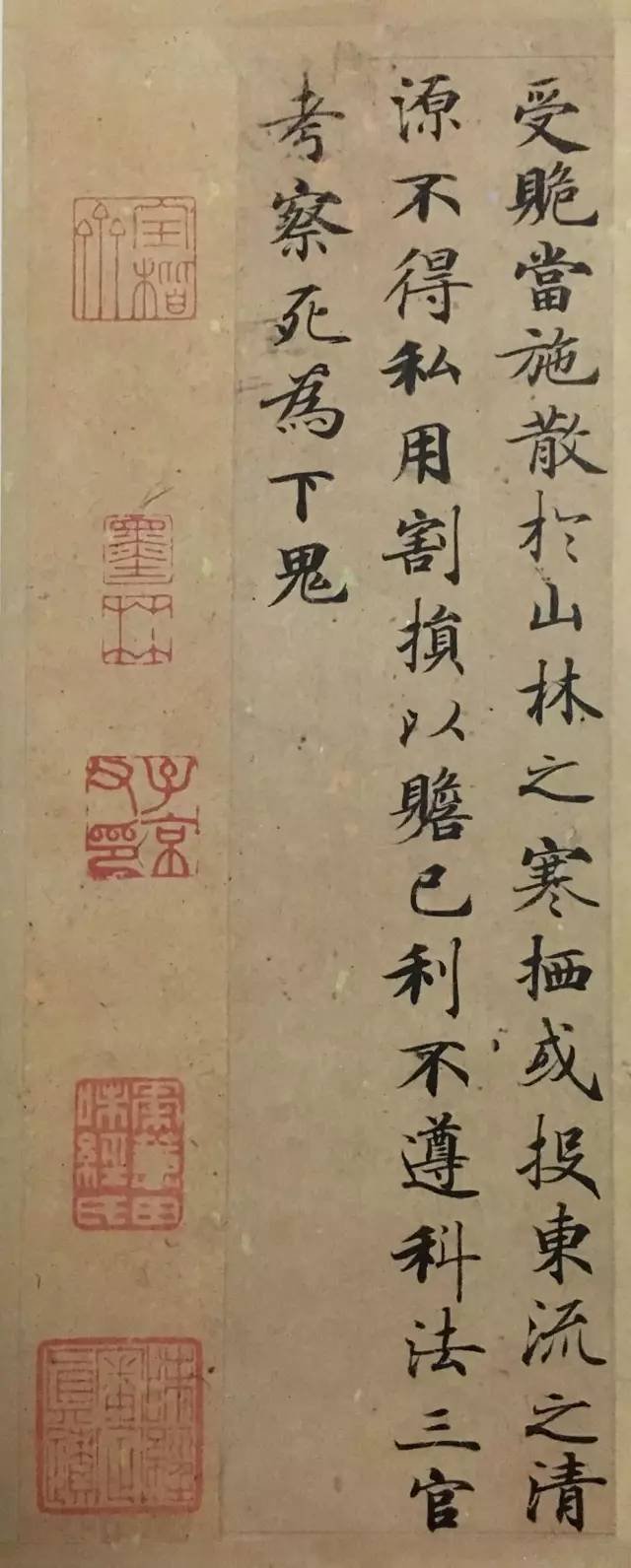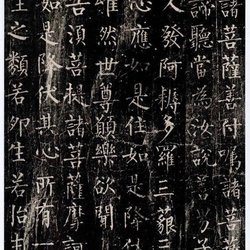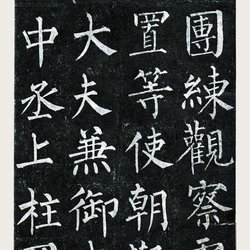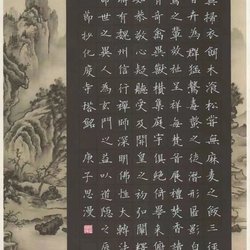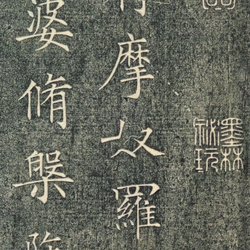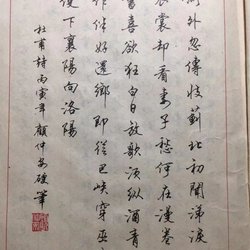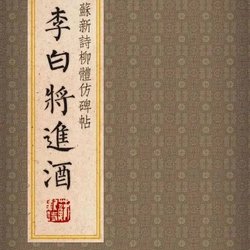"Ling Fei Sutra" in small regular script is a favorite of many people. It is not only a classic for calligraphy in small regular script, it is also a very good model for practicing hard brush writing.
However, there are so many versions of "Ling Fei Jing" that one can get confused accidentally. The ancients could collect one version as a treasure. We are much happier than the ancients. With the advanced printing technology, it is no problem to read any version. More importantly, with PS, we can watch it however we want. Even if all versions are put together, it is a piece of cake——
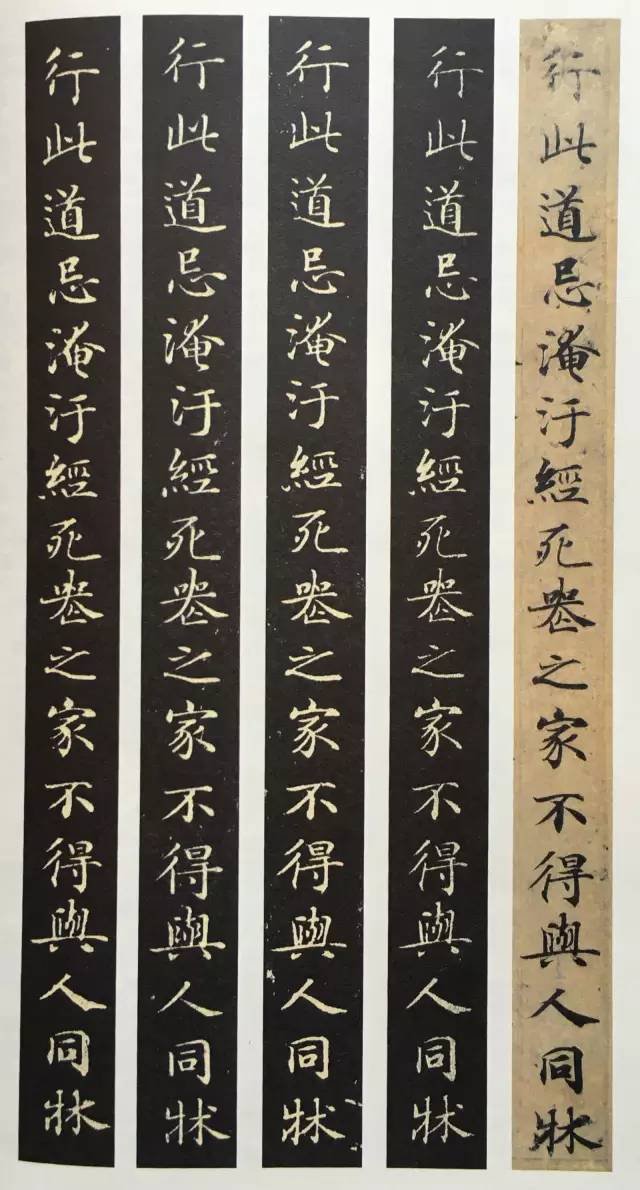
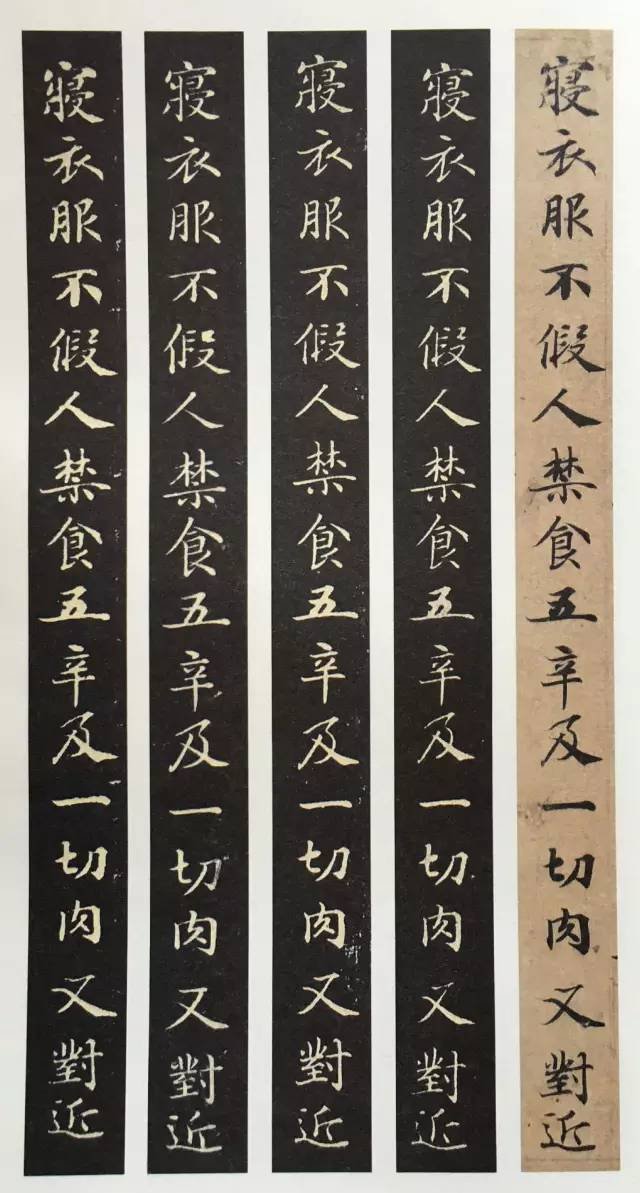
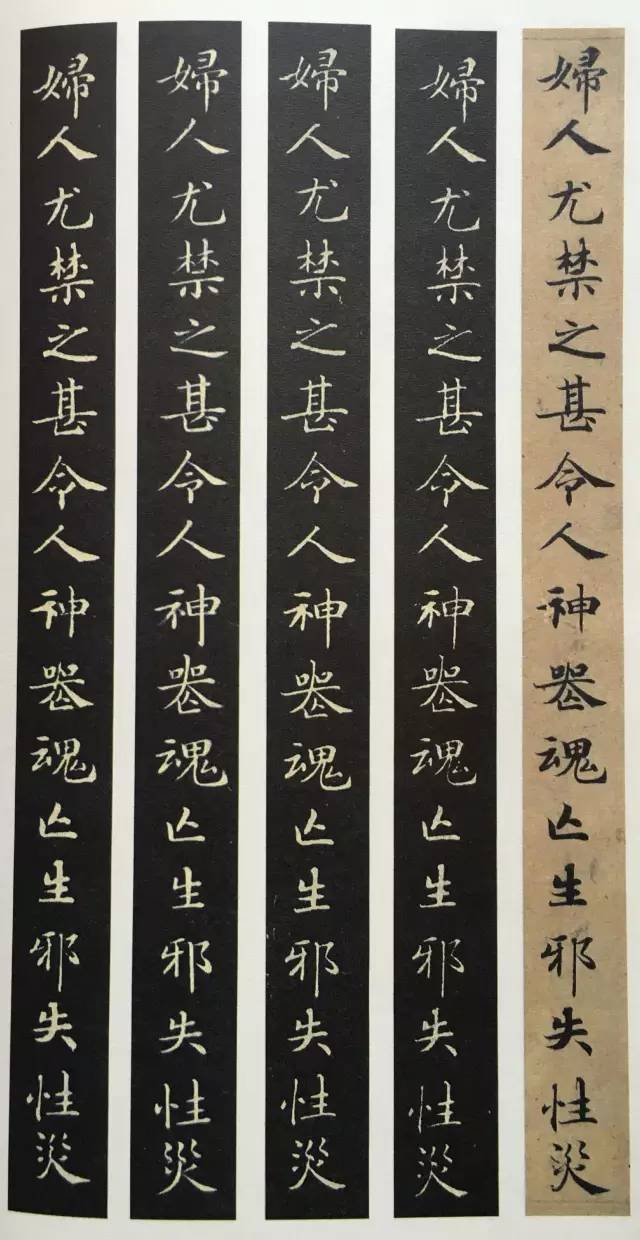
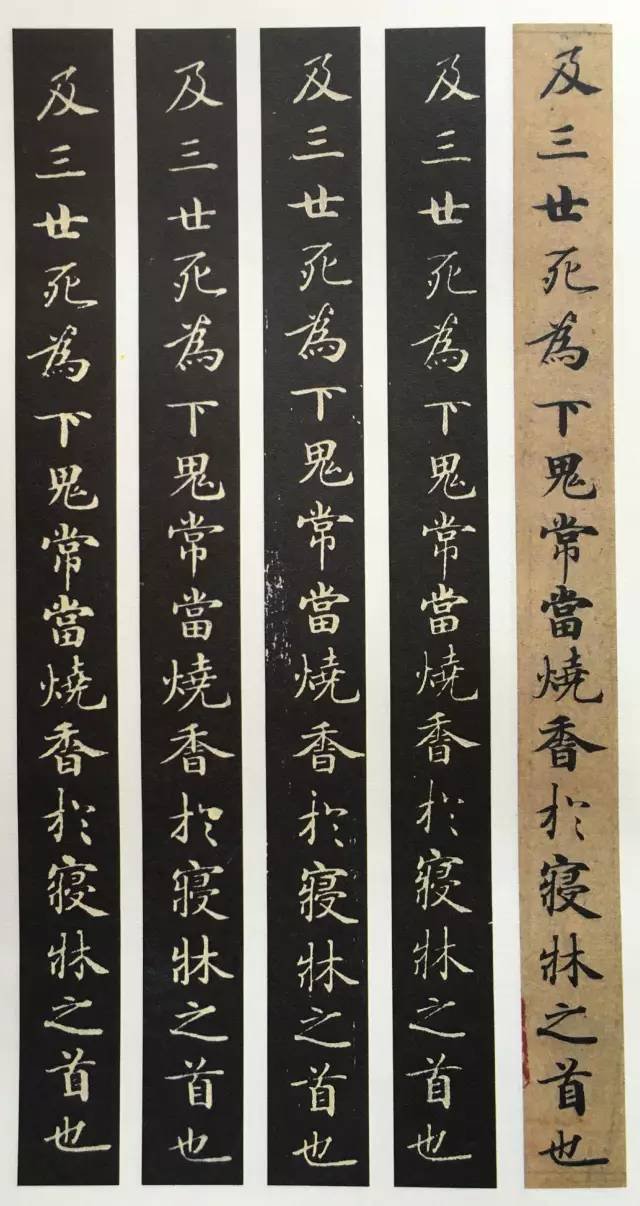
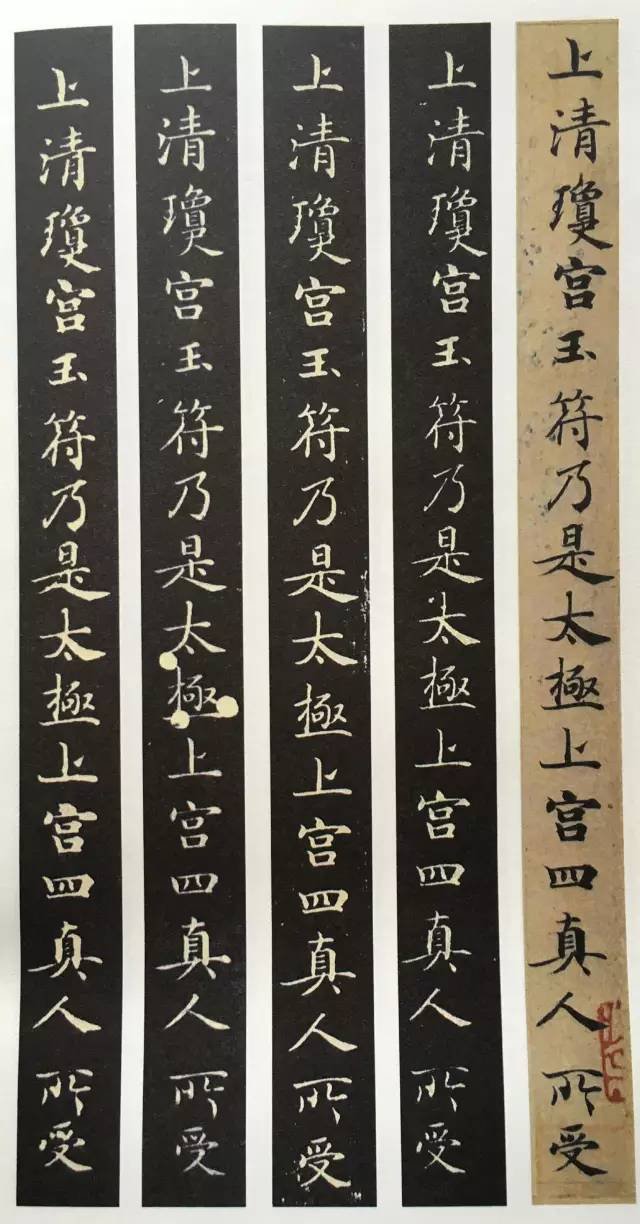
These five editions, from left to right, are the Wangyunlou edition, the Harvard-Yenching Institute edition, the Zihuitang edition, the Bohai engraving edition, and the original calligraphy.
The four engraved editions are all ink. The difference is that the Wangyunlou edition was engraved directly from ink during the Jiaqing period of the Qing Dynasty, the Bohai edition was engraved from ink in the late Ming Dynasty, and the Harvard-Yenjing edition and Zihuitang edition were both reprinted. .
It is generally believed that due to the engraving process, the Wangyunlou version is closest to the ink mark, the Bohai version is quite different, and the other two engraved versions have a different flavor.
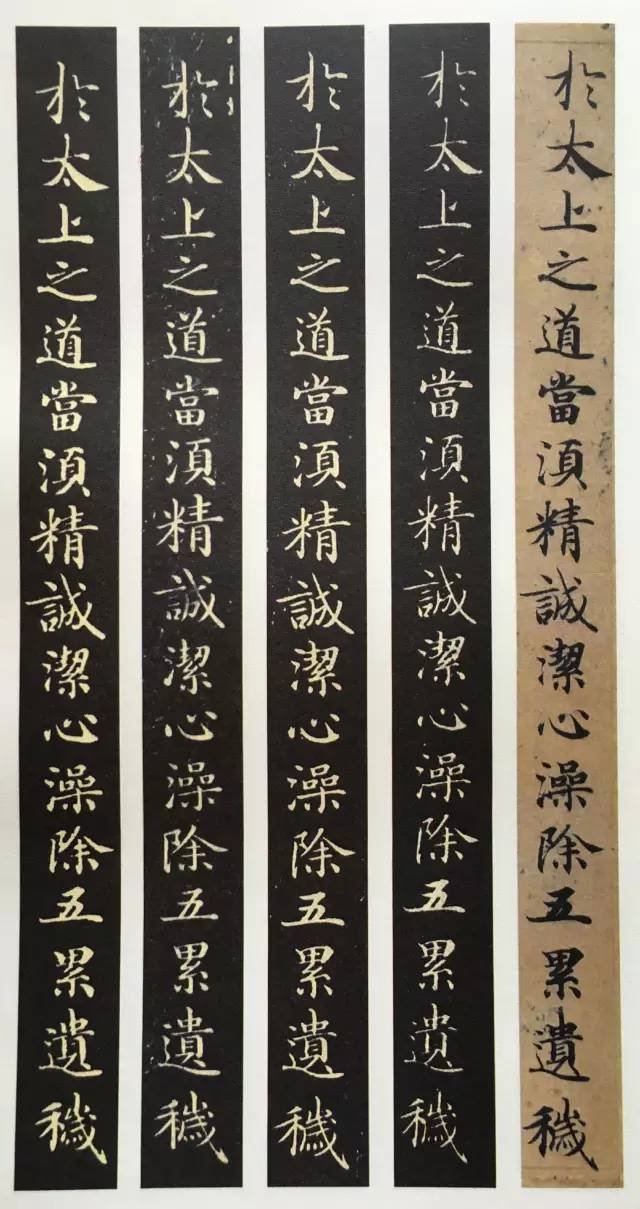
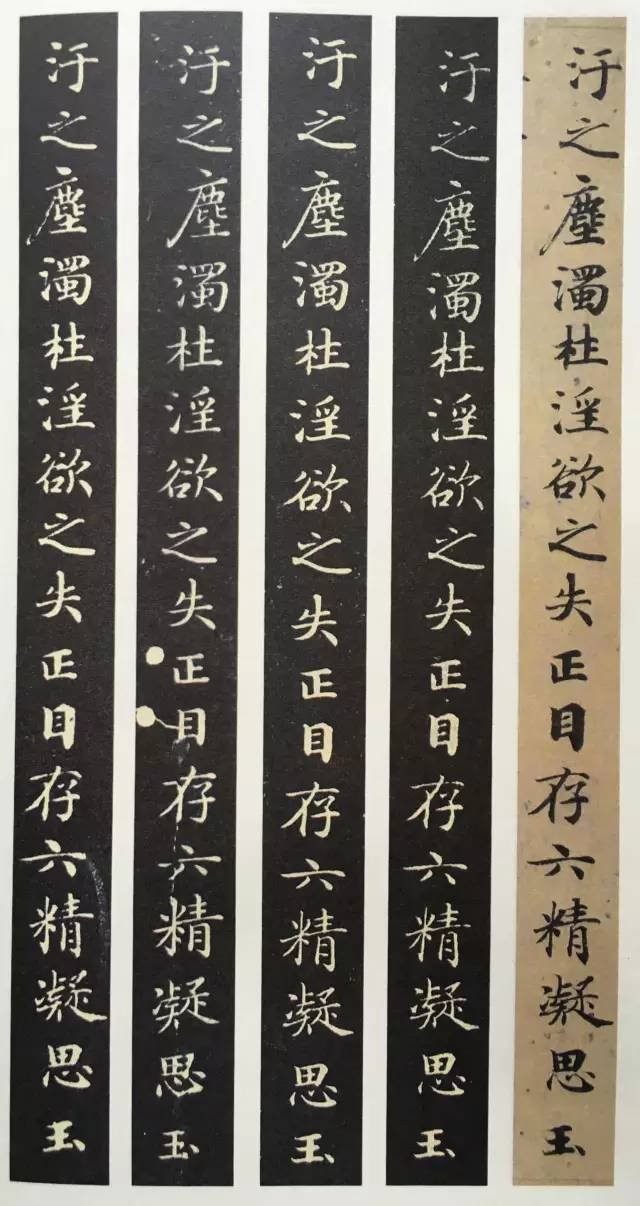
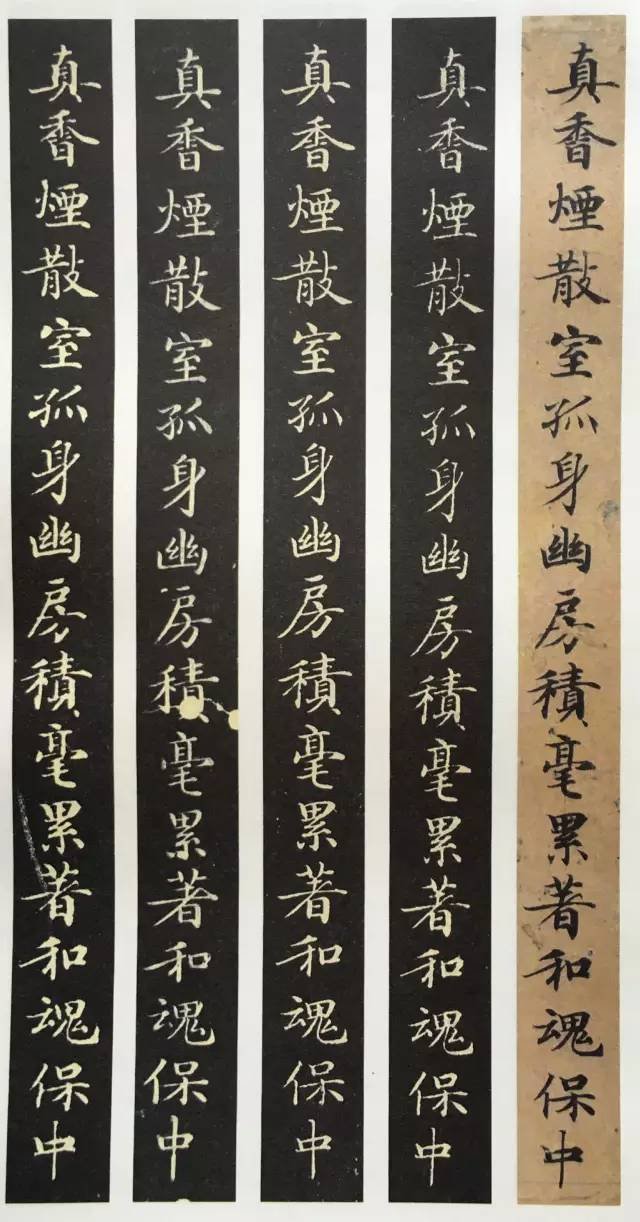
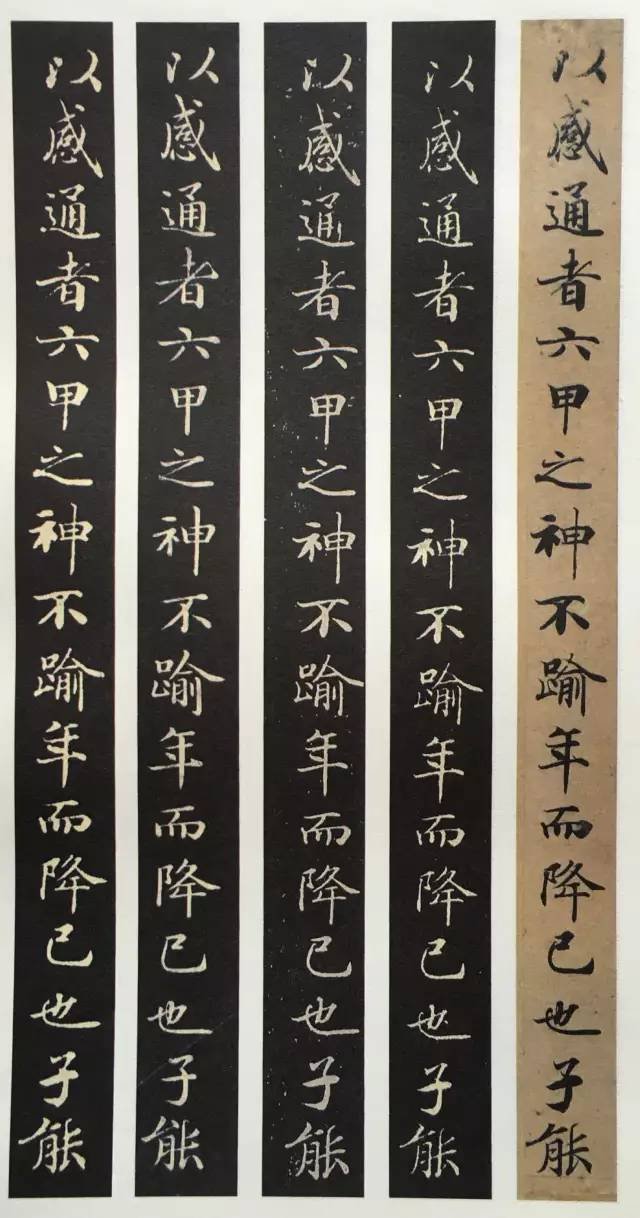
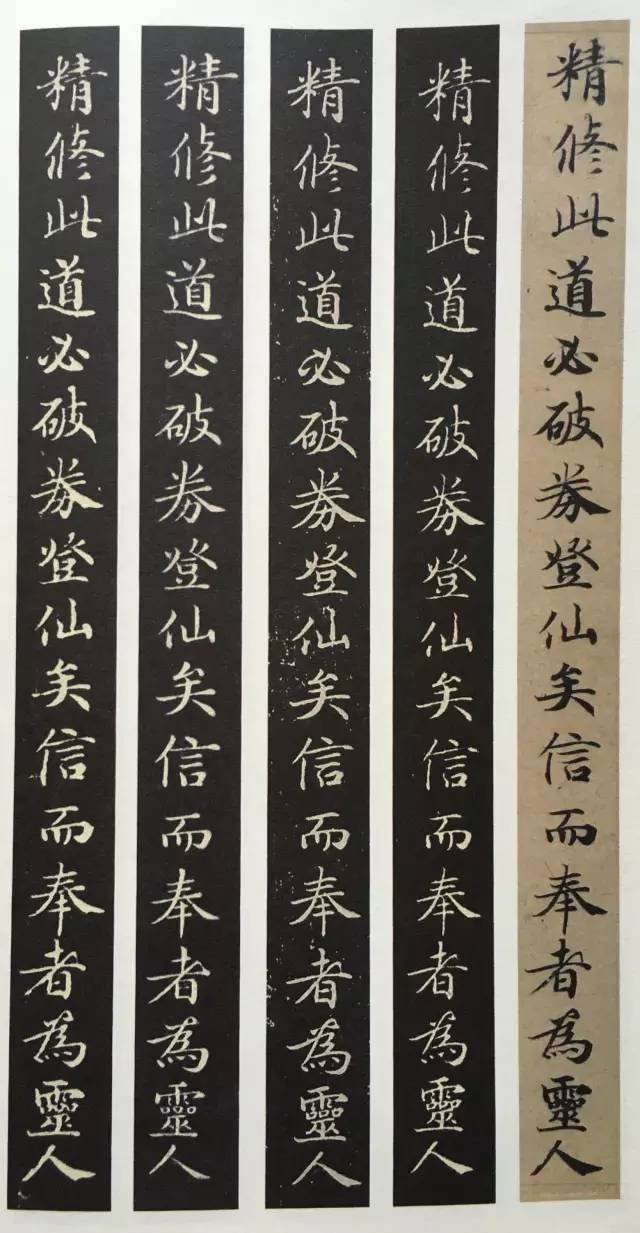
We all know that in calligraphy, ink writing comes first, followed by inscriptions. In the inheritance of "Ling Fei Jing", there are always some people who believe that the Bohai version is better than the ink version, which is difficult to encounter in other classic works.
The reason for this is related to the writing nature of "Lingfei Jing". Although the ink marks are vivid and lively, a certain custom can occasionally be seen in the threads. The Bohai engraver was not completely faithful to the original inscription, but made certain reductions in the engraving to erase the custom, making the inscription appear simple. So handsome.
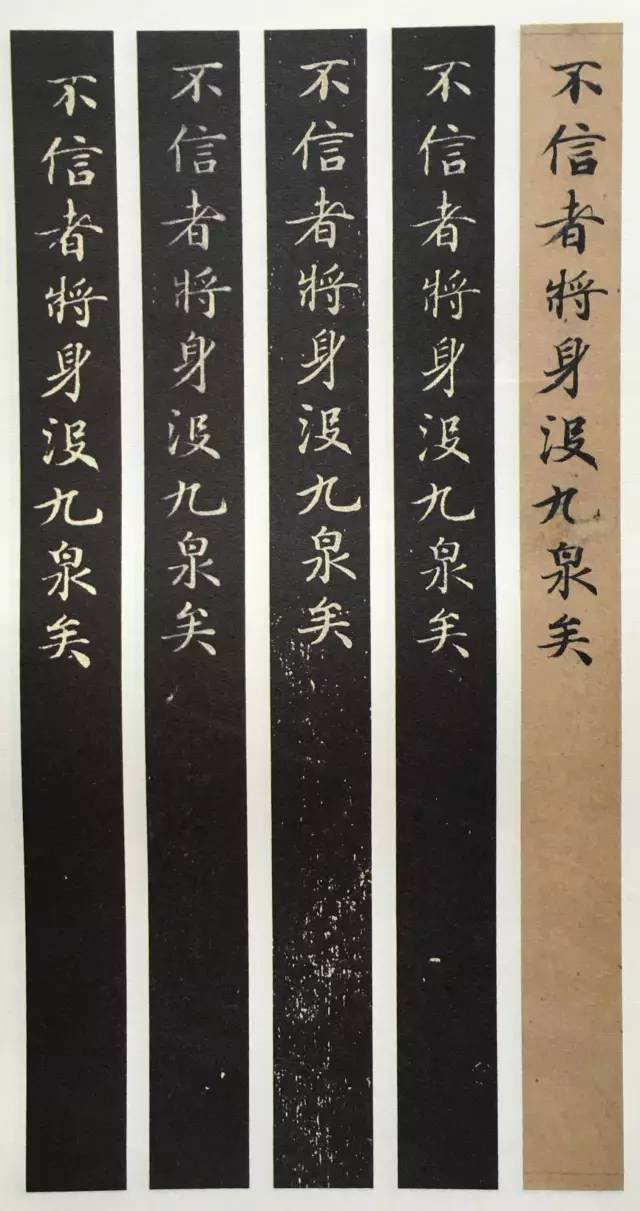
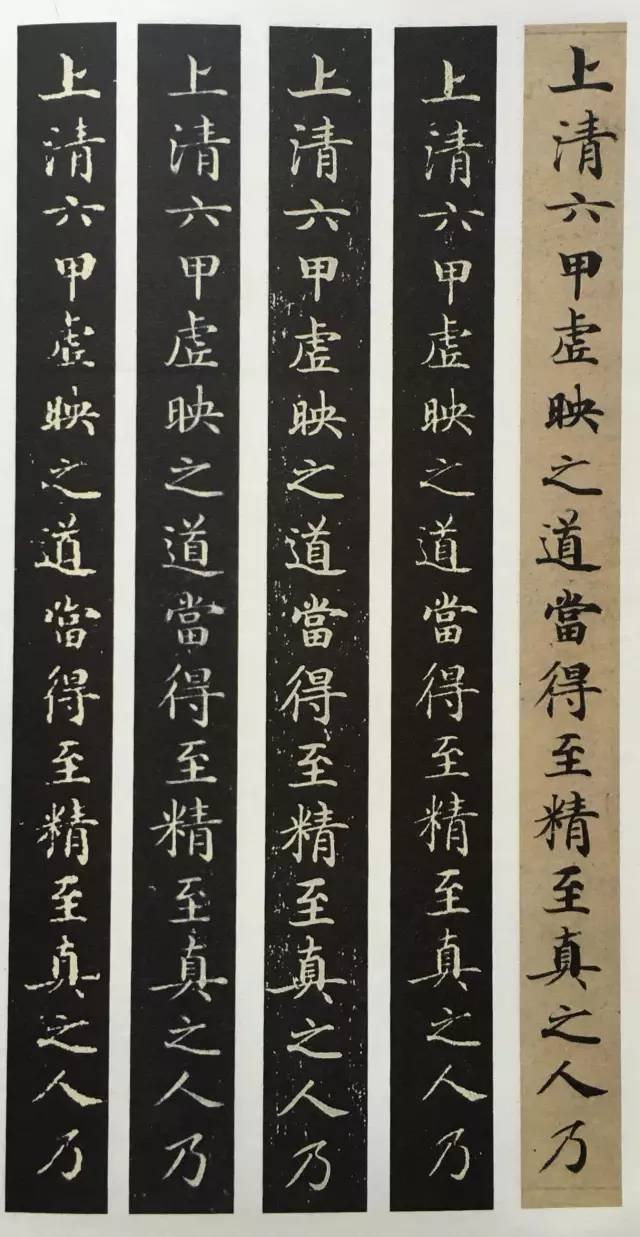
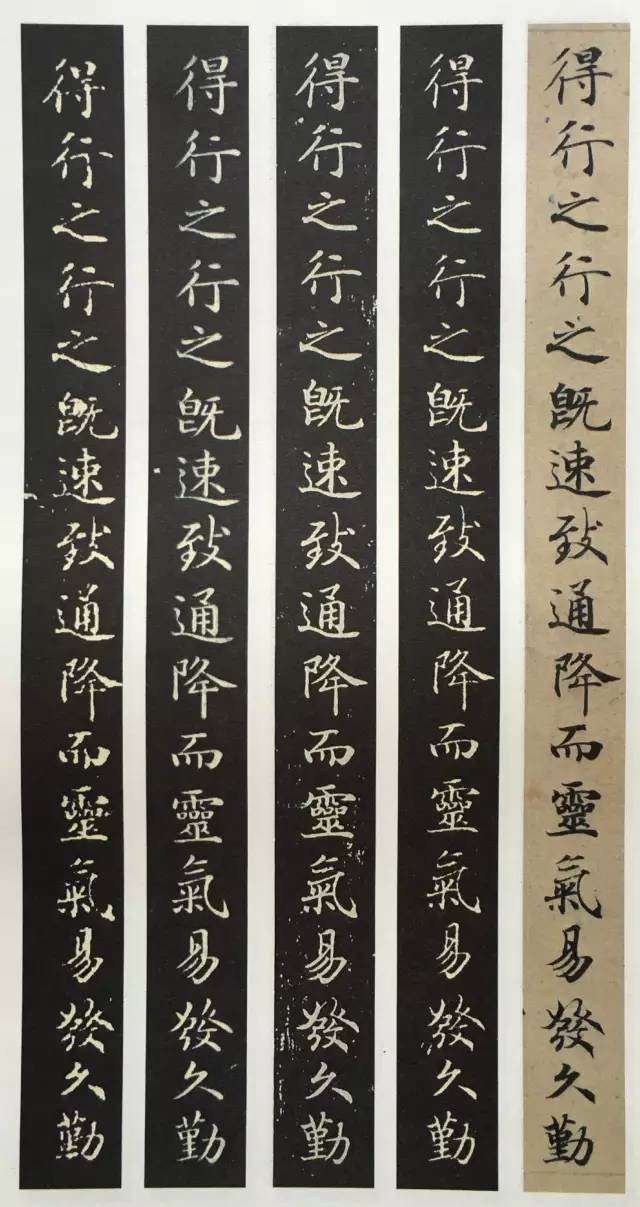
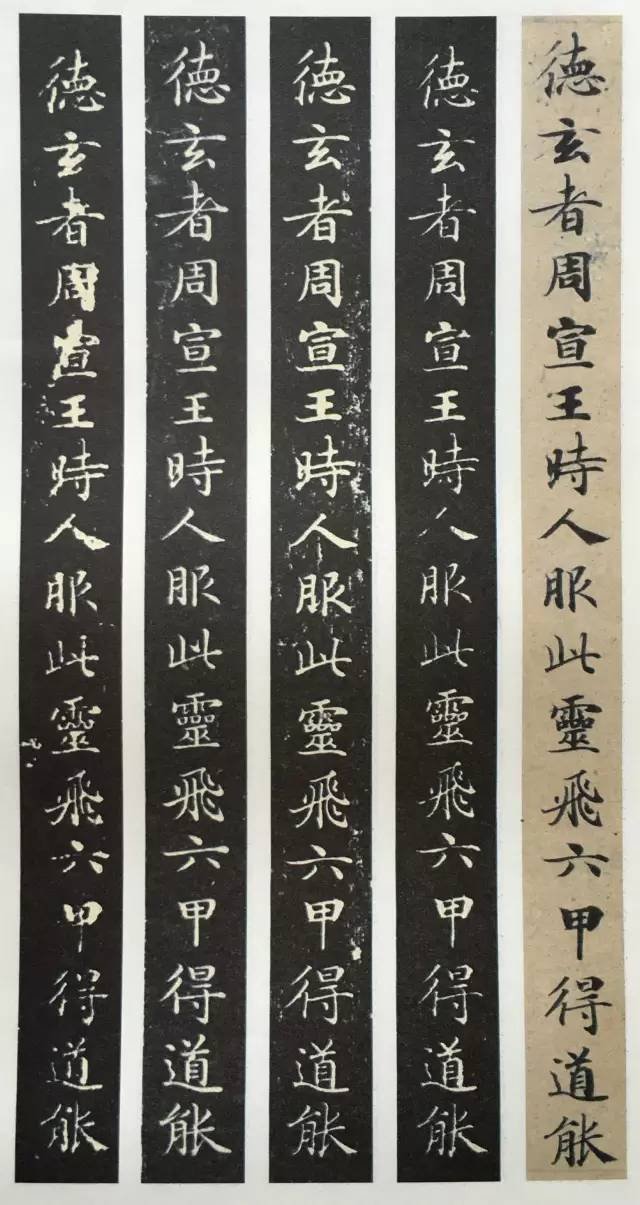
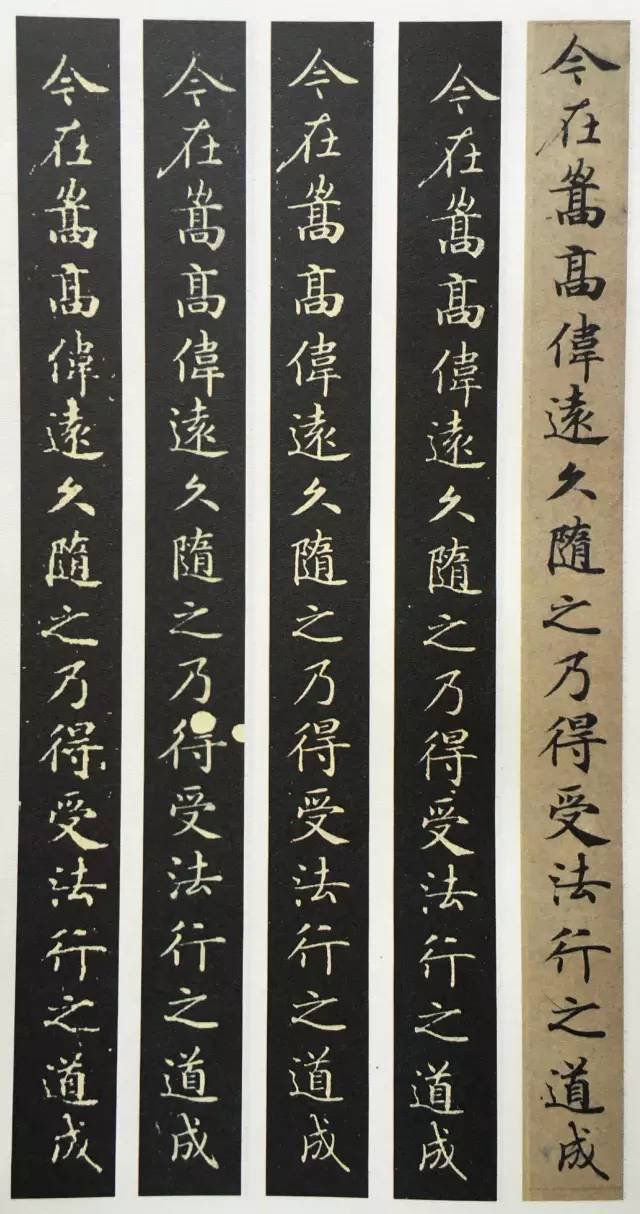
Another reason why many people like Bohai is the large number of words. Because there are only 43 lines left in the existing ink copy.
According to records, the complete ink copy of "Ling Fei Jing" once entered the Song Dynasty, and fell into the hands of Dong Qichang in the Ming Dynasty. Dong Zeng mortgaged it to the Chen family in Haining, and the Bohai version was carved by the Chen family at this time. Later, Dong redeemed the ink book, and the Chen family tampered with it and extracted 43 lines from it. However, this disgraceful move "saved" the "Ling Fei Sutra", because after the ink copy was returned to Dong Qichang's hands, it disappeared without a trace.
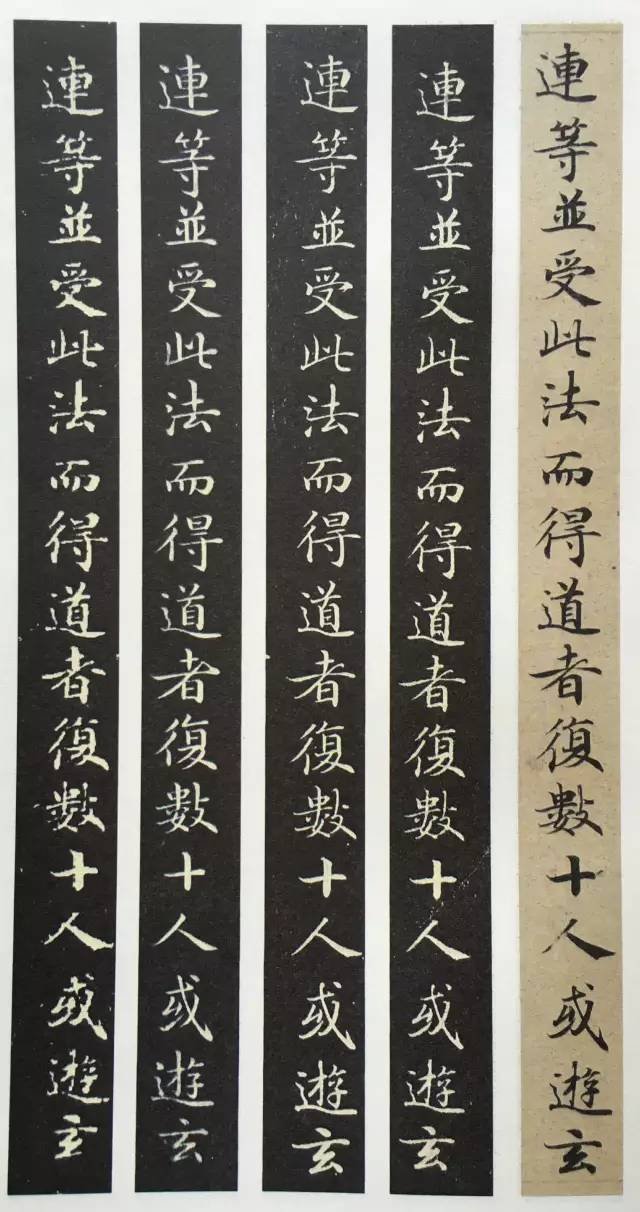
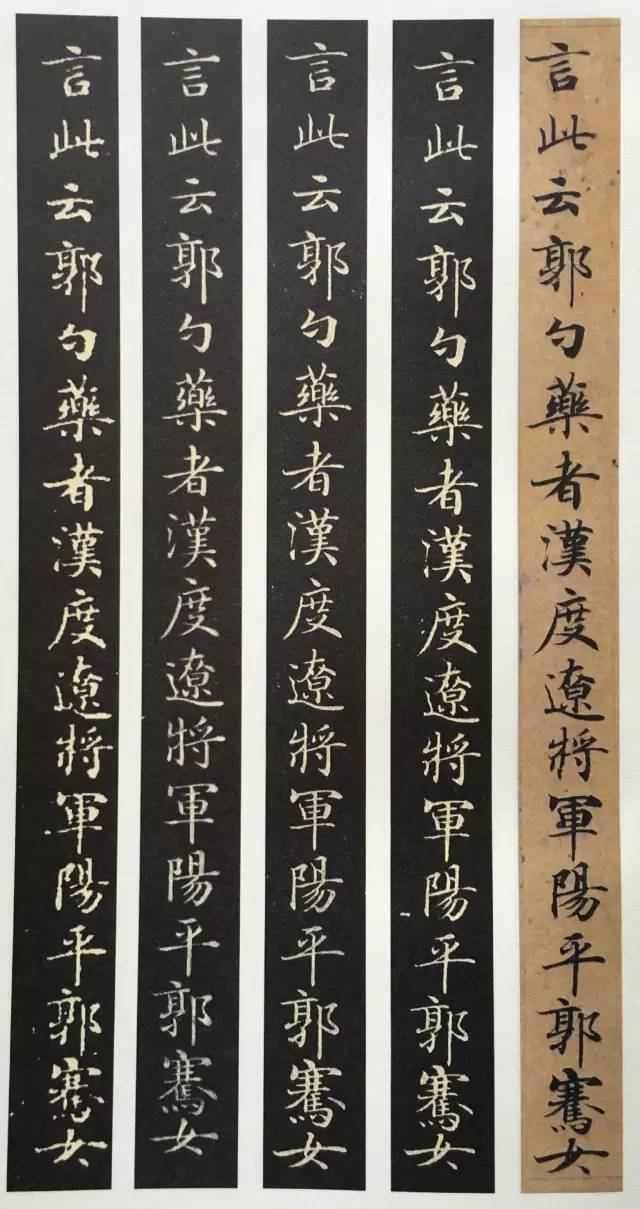
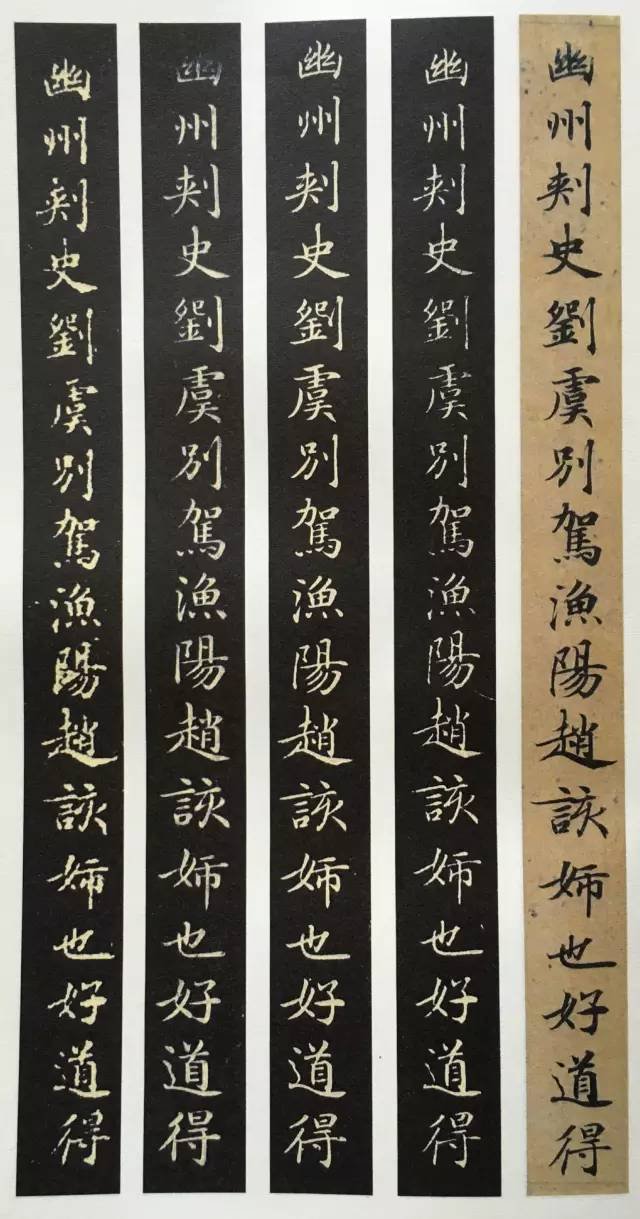
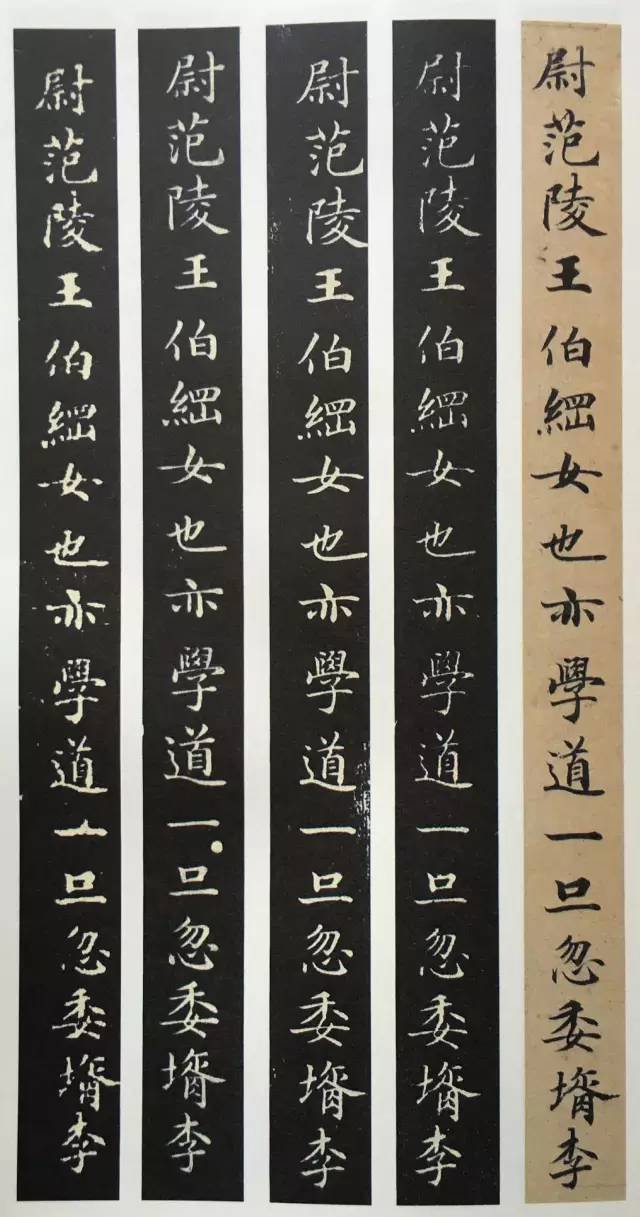
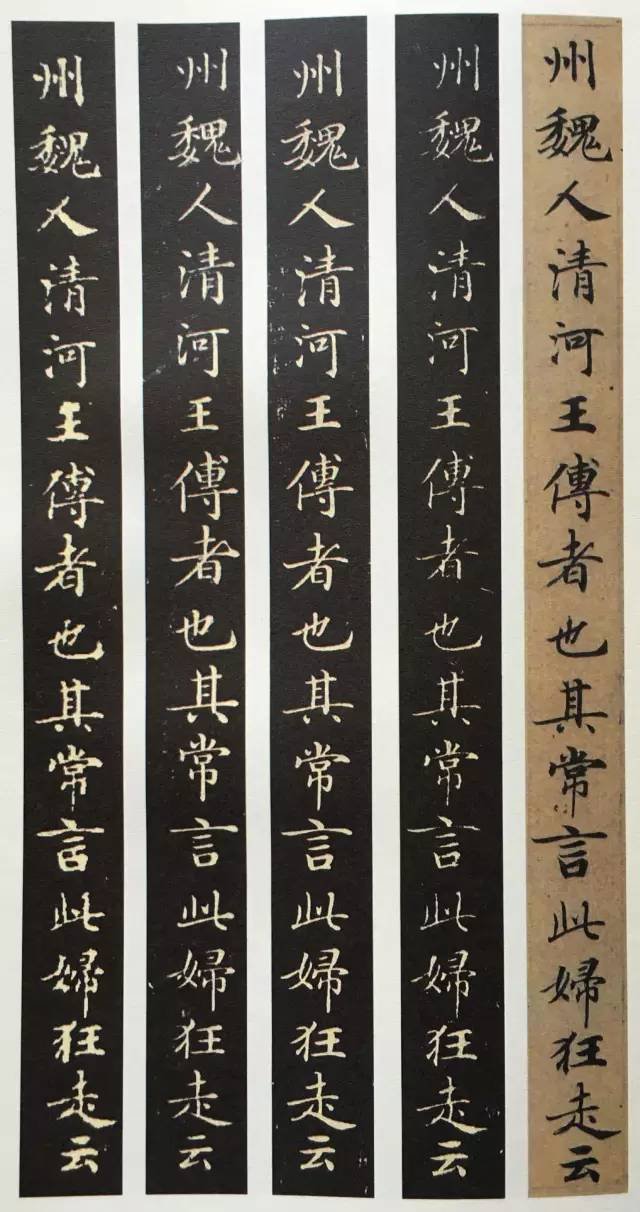
A "Ling Fei Sutra" hides too many stories.
And it itself is still a mystery. Some people say that it was written by Zhong Shaojing, the "first calligrapher of Kaiyuan Dynasty" in the Tang Dynasty. Some people say that it was written by Princess Yuzhen. Some people say that it was written by Zhao Mengfu of the Yuan Dynasty.
However, these do not prevent "Ling Fei Jing" from becoming a classic in regular script.
Its beautiful figure and delicate air have always exuded immortal charm. For thousands of years, it has been appreciated by both refined and popular people, and by both men and women.
Attached: 43 lines of ink from "Ling Fei Jing"
